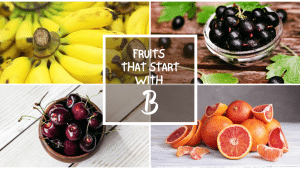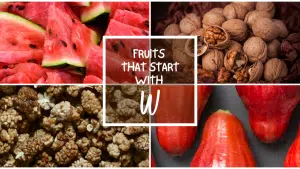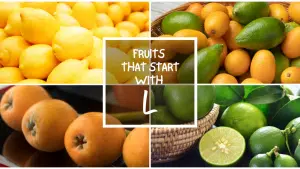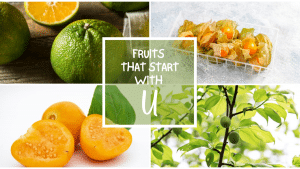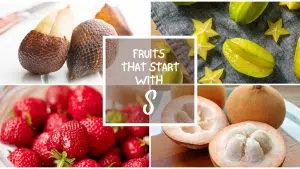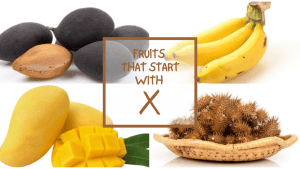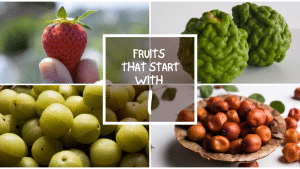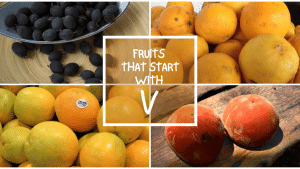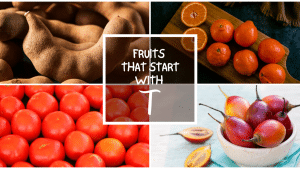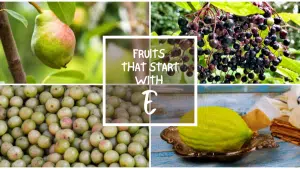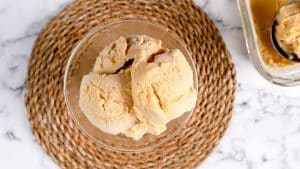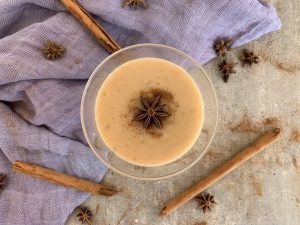All The Fruits That Start With Q
Important Note: When you buy through our links, we may earn a commission. As an Amazon Associate we earn from qualifying purchases. Content, pricing, offers and availability are subject to change at any time - more info.
Fruits are an essential part of our diet, that nature offers as a precious gift. The list below is necessary because it will assist you in navigating healthy fruits that may not be familiar to you and boost your knowledge of fruits in existence. You need to know a list of all the fruits that start with the letter Q to widen your fruit platter, to use on your dessert recipe, where you can purchase them, their origin, their scientific names, their health benefits, and even to be a gift you will take to parties. Q being a rarely used letter, it does not have a long list of fruits starting with the letter Q.
Did you know? There are no vegetables that start with Q!
The fruits listed are quince, quararibea, queen Anne cherries, quenepa, queen Tahiti pineapples, queen’s Forelle pear, quandong fruits, and Quinault strawberries, among many others. They have delicious flavors that you will enjoy. Here is a list of all the fruits that start with the letter Q around the world.
- Quince
- Quandong
- Quenepa
- Quinault Everbearing Strawberry
- Queen Tahiti Pineapples
- Queen Anne Cherries
- Quararibea
- Querina Apples
- Queen’s Forelle Pear
- The Final Letter
Quince
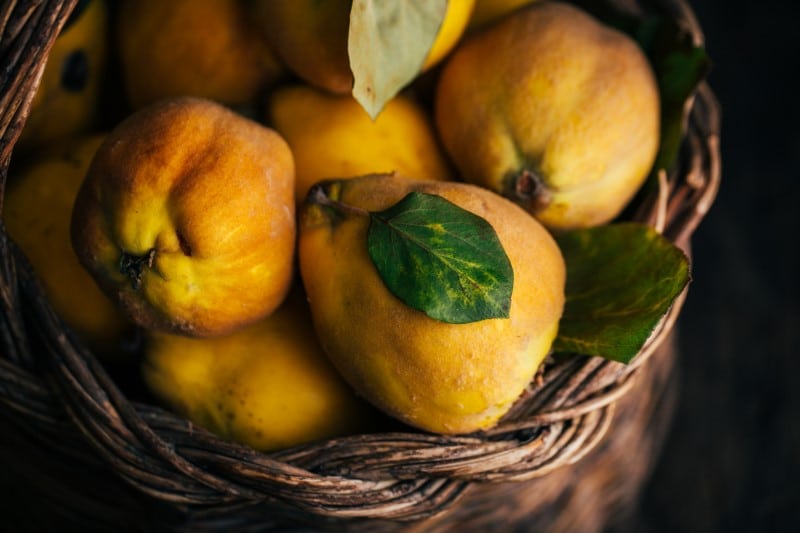
The scientific name of quince is Cydonia oblonga. Quince is originally from southwest Europe. It is among the oldest fruits to be cultivated. It has a shape of a pear. The tree that produces quince has a beautiful appearance that has made it popular among landscapers who plant it for decoration purposes. Quince is believed to have once grown in the garden of Eden and has a touch of the divine. It is a very delicious fall fruit. However, its appearance is not so divine. It is lumpy and complex with a texture that is sponge-like. It shines and releases a delicate and aromatic smell when you cook quince fruit. It also turns soft and sweet. The edible fruit can be enjoyed raw with a spoon, or you can use quince as an ingredient to make jams, sauces, and jellies (sometimes referred to as quince cheese). It pretty much can be combined with any dish.
Just like pears and apples, quince fruit is found in the Rosaceae family. The skin of quince fruit is yellow. The quince tree is used in the horticulture industry for decorating gardens and other artistic purposes. The majority of the fruit has an unpleasant and sour taste, but a few are actually enjoyable and sweet. The tart flavor of a quince fruit has made it hardly eaten raw. There are people who enjoy roasted quince fruit. When the fruit is roasted, it ripens and releases all its sugar while it changes its color to red. Quince fruit is a rich source of several nutrients such as vitamin C, copper, and low calories.
Eating quince has potential health benefits for the consumers, such as performing anti-ulcerative and antioxidant activities. The tree that produces quince fruit is also grown for decorative purposes because of its pink blossoms, which are very attractive.
Quandong

The scientific name of quandong fruit is santaluma cuminatum. Quandong fruit is hemiparasitic and belongs to the Santalaceae family. It is also known as native peaches. Quandong is popularly grown in some parts of Australia where it originated. It is currently well spread in the southern areas and central deserts of Australia. The tree that produces quandong fruit is drought resistant. The fruit resembles a large berry and is bright red.
The giant tasty berry is full of seeds. The flesh of a quandong fruit is thin and very tasty. It surrounds a large seed that you can use in making jewelry and crafts. The seed in the tough shell can also be used to create paste that can assist in medicinal purposes. However, quandongs come at very high prices not only because of their sweet and tangy flavor but also the medicinal purposes it serves. It is believed to be able to treat multiple ailments such as wounds and toothaches and also perform antiviral and antibacterial activities. Quandong is also used as an ingredient to make juice or pies to add an exotic flavor to the dishes.
This fruit has been enjoyed by multiple cultures for many years and has been categorized as a staple fruit in some indigenous cultures. The taste of quandong fruit gets sweeter as it ripens. Its flavor is sometimes compared to apricots, earthy rhubarb, and peaches. You can choose to enjoy your quandong fruit, either dehydrated or fresh. However, the dehydrated quandong fruits are more accessible to locate than fresh ones and vary depending on where you live. It is also a rich source of vitamin E, calcium, iron, folate, and magnesium.
Quenepa

The scientific name of quenepa is melicoccus bijugatus. It belongs to the Sapindaceae family. Another name for quenepa is quinep, Bajan, mamoncillo, huaya, Talpa jocote, kenepa, and Spanish limes. Quenepa originated from South America and belonged to the soapberry family. It is commonly grown in tropical regions such as the Caribbean, Central America, and India. It looks similar to tiny green grapes, although it has a unique taste. Quenepa tastes have both tangy and tart flavors. It has a flavor close to that of wine. Its peel is green and thin, with the inside being fleshy and orange with a pasty texture. When it ripens, it’s sweet and very enjoyable. It usually ripens in the warm seasons, like summer. To find quenepa for purchase, vendors often sell them on roadsides. Most people enjoy the fruit raw, can it, or blend it to make a refreshing juice that can cool you off the tropical heat.
Quenepa is a drupe fruit round in shape and about three centimeters wide. Quenepa has a hard outer shell that you need to crack before you get to suck out its creamy flesh. It has a slippery seed that can cause the hazard of the consumer choking. The seed of a quenepa can also be a delicious snack. It would be best to roast it and add salt for a crunchy and tasty snack. The roasted seeds look similar to cashew nuts.
Other ways of consuming the seed of quenepa fruit are drinking it in juice or eating it raw. Quenepa fruit is a rich source of vitamin C, phosphorus, iron, and vitamin A. The tree that produces quenepa fruit grows to about 25 meters tall with compound leaves that are alternate. The tree comprises elliptic leaflets in two pairs. The quenepa fruit commonly matures in the dry season, like summer. The wood of a quenepa tree is dense and heavy, and therefore it is sometimes used for carpentry, construction, and exquisite cabinet making. However, its wood is not durable and thus is ideal for use indoors only. The tree is also planted for ornamental purposes.
Quinault Everbearing Strawberry
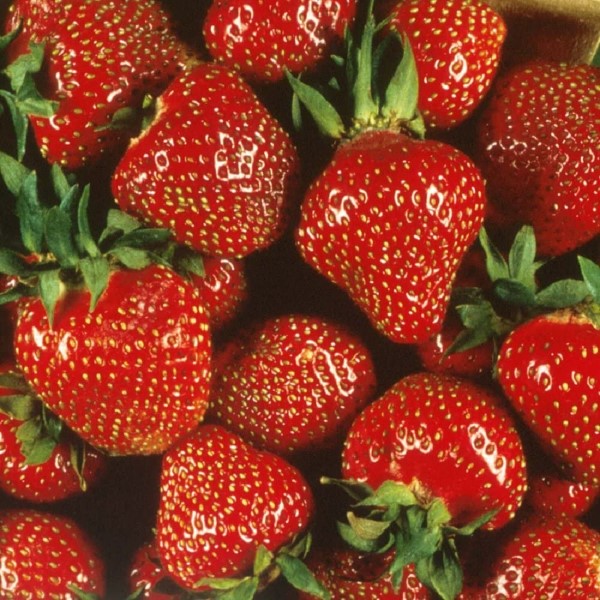
The scientific name of the Quinault strawberry is Fragaria x ananassa. It is a type A variety of a berry that can withstand diseases and conditions that regular strawberries cannot. This variety of strawberries is sweet and extra-large. Its taste is delightful because of its high level of sugar in it. Quinault’s everbearing strawberries do not need pollinators because they are self-fertile.
Quinault strawberry was created in 1967 at the Washington state university. The berries bred by the university have the unique ability to have unrooted runners. Thus, Quinault’s everbearing strawberry can quickly be grown in a container, and the runners will still produce fruits even if they are hanging on the edge of the container. It has grown popular because of the remarkable trait that you can harvest it more than two times a year. People mostly grow it in home gardens. After planting the Quinault everbearing strawberry, you can harvest it after the first year. The fruit is also highly resistant to viruses and pests.
You get to enjoy the Quinault strawberry at least every spring and fall. It is commonly grown in the pacific Midwest and northwest. Another name for Quinault strawberry is everbearing strawberry because of the multiple times you can harvest them in a year. It has a very juicy and sweet flavor. You can use the fruit as an ingredient in making dessert recipes or when baking to add Quinault strawberry’s tart flavor. The fruit contains a fresh and fragrant flavor. You can enjoy this fruit as an ingredient in recipes such as ice cream, jellies, and chocolate-covered recipes. It is a rich source of folate, potassium, magnesium, and vitamin C.
Queen Tahiti Pineapples
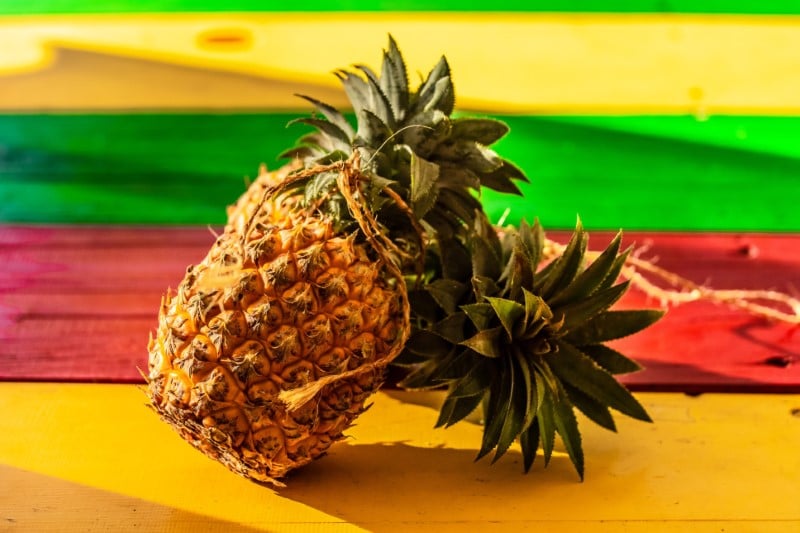
The scientific name of queen Tahiti pineapples is ananas comosus. It belongs to the Bromeliaceae family together with Spanish moss. Other names for queen Haiti pineapples are moorea pineapple, painapo, and Tahitian pineapple. This tropical fruit has a juicy and pleasant flavor. The fruit is in season all year long in nearly all places it grows. If you wish to purchase the queen Tahiti pineapples, you can find them in local grocery stores and international markets. The skin of the fruit is golden with a rough texture. Queen Tahiti pineapple has a long and cylindrical shape with a golden yellow rind. Its rind also has a hexagonal rough texture with green patches. The leaves of the fruit are sharp, waxy, and green. Its inside is fleshy, succulent, and bright yellow. The fruit is very juicy and with a sweet-tart flavor. Queen Tahiti pineapples have a robust fragrant flavor.
This fruit has been cultivated for several centuries now. You can use the queen Tahiti pineapple as an ingredient to make vanilla ice cream, grilled dishes, and dessert toppings. It is also a rich source of nutrients like fiber, vitamin C, manganese, and vitamin B1 and is low in calories. In Tahiti, queen Tahiti pineapples are among the most cultivated plants. You can enjoy your queen Tahiti pineapple fresh, grill it, blend it to create juice, or distill it to produce wine.
You can store the queen Haiti pineapples fresh for two days if they are at room temperature and about seven days when you store them in a refrigerator. Consumers of queen Tahiti pineapples are able to gain from its potential health benefits such as healing bowel movements, monitoring the functioning of the nervous system, and performing antioxidant activities.
Queen Anne Cherries
The scientific name of queen Anne cherries is Prunus avium. Other names for queen Anne’s cherries are napoleon cherries, napoleon bigarreau, and royal Anne. Queen Anne cherry is native to turkey, close to the black sea. By cultivating the fruit, the greeks helped it spread to England through the roman empire. There the queen Anne cherry was used as a source of timber and food. It is usually at its peak of ripening during the mid-summer.
The fruit’s taste and appearance are similar to Rainer cherries, a light pink color. It is small in size like the majority of cherries. The fleshy stone fruit’s skin is yellow and light pink. Queen Anne cherries have a firm texture with a sweet and delicate flavor. It is a rich source of vitamin C, anti-inflammatory, and antioxidant compounds. Although the fruit benefits the human body because of its antioxidant properties, you should not intake it highly since it is full of sugar. Research shows that eating queen Anne cherries has medical benefits such as treating chronic diseases like hypertension and diabetes and improving sleep. You can enjoy your queen Anne cherries canned, preserved, or use them to prepare your special cocktail, jam, or smoothie. It is ideal for making these recipes because of its natural sweetness. Queen Anne cherries are commonly canned because of their fragility.
Queen Anne cherries have high levels of sugars such as fructose, sucrose, sorbitol, and glucose. It also has a few organic acids like fumaric, shikimic, citric, and malic. This stone fruit, among others, has a toxic compound that produces hydrogen cyanide that is lethal if consumed in large doses. The hydrogen cyanide can be found in a queen Anne tree’s flowers, seeds, leaves, and bark.
Suppose you want to purchase the queen Anne cherry fruit in America at farmers’ markets and grocery stores. More so in Oregon, Washington, and Michigan states. The Queen Anne cherry tree is recognized by its tiny fragrant white flowers that are arranged in clusters and its dark green leaves. Queen Anne flowers are hermaphroditic, which means that they contain both male and female reproductive organs, although they cannot self-pollinate. For it to pollinate, it needs pollinators like bees to fertilize. A mature tree ready to fruit queen Anne cherries is usually about 15 feet and might take up to 8 years to reach there.
The fruit is finicky and very delicate. It is not commonly grown by people who garden as a hobby because it can be time-consuming to cultivate.
Quararibea
The scientific name of quararibea is quararibea cordata. The fruit belongs to the Malvaceae family. It originated in Florida in America around the 1960s. another name for quararibea is chupa chupa, the south American sapote, and quararibea cordata. This fruit resembles a mango, but its taste is similar to apricots with a hint of a pumpkin. It has a unique tropical taste and is small compared to coconut. Its skin is brown, porous, and thick. The skin of the quararibea cordata fruit is bright orange to brownish. The inside is very juicy, soft, and sweet, with a touch of sourness. The fruit usually has about two to five seeds in it. It isn’t easy to get access to the quararibea fruit at grocery stores in America.
However, you can get this fruit in a few grocery stores in South America. Quararibea is commonly found in Colombia, Ecuador, Brazil, and Venezuela. The fruit can be eaten fresh from the tree. You can use the quararibea fruit as an ingredient to make cocktails, liquor, and lime juice. It is also a rich source of vitamin C, phosphorus, calcium, and carotene. The quality of quararibea is greatly affected by the soil it grows in.
The quararibea tree grows to about 45 meters tall. The fruit thrives in wet and deep soils. However, floods can destroy the plant and even kill it. Therefore, the fruit is not recognized internationally and has been planted in its native range only.
Querina Apples
The scientific name of querina apples is Malus domestica’ Florina’. Another name for querina apples is Florina. Querina apple got its name after a french cultivator who combined the characteristics of golden delicious, Jonathan, and Rome apples. The fruit was created in France, but its roots are found in North America. It is very hardy and firm but juicy. Querina apples are commonly grown on both sides of the Atlantic ocean. It is a french variety of apples with a tart and sweet taste blend. The size of a querina apple is medium and sometimes large, with beautiful skin. It has a yellow background with touches of purple-red covering it.
Its sweet flavor makes it an excellent snack. The fruit was first introduced to the commercial market in the 1980s. Most of the consumers of querina apples enjoy them raw. It has a delicate and aromatic flavor. Querina apples are bold red, firm, and quite sweet. It has a distinctive appearance of red and purplish streaks on its skin. The fruit has been used to produce tasty ciders that can last for several months without brewing. For the long life of the querina apples, you should store them in a cool and dry place. This way, they can last up to three months after picking them with their fresh flavor still intact. The fruit can also be used as an ingredient when cooking and baking. The querina apples, if you keep them well, can stay up to three months. Also, querina apples are self-incompatible and don’t need to be cross-pollinated.
Queen’s Forelle Pear
The scientific name of queen’s ferolle pear is Pyrus pashia. Queen ferolle pear has the shape of a bell. It is the smallest among the rest of the pear family. Another name for queen’s ferolle pear is ferolle. The fruit resulted from cross-breeding between Madame Verté and Nordhäuser Winterforelle. Queen’s ferolle pear is most harvested in late September.
The fruit is usually green in color and later turns yellow when it ripens. Its skin has a touch of red that looks like a trout. The green pear is elongated and has a red flush. The slightly firm fruit has a sweet, crispy, and tangy flavor. You can enjoy your queen’s ferolle pear as an ingredient to make baked items, oatmeal, and yogurt, among others. The pear is packed with nutrients like vitamin C, fiber, niacin, and folate. Eating queen’s ferolle pear is said to have several medicinal benefits, such as relieving inflammation, constipation, and a few chronic illnesses.
The Final Letter
Enjoy this extensive list of fruits starting with the letter Q. After reading this article on fruits beginning with the letter Q, you will be able to identify unique fruits by their appearance and smell quickly, and it will not be based on the taste judgment only. It contains the origin of the fruits, their nutritional values, the recipes you can include them in, their taste, scent, and even where you can purchase them. This glossary of fruits will help you overcome the challenge of having difficulties naming fruits beginning with the letter Q and broadening your fruit platter. This list will be beneficial in boosting your fruit knowledge, enriching your diet, and discovering new delicious recipes you can use these fruits to make.


